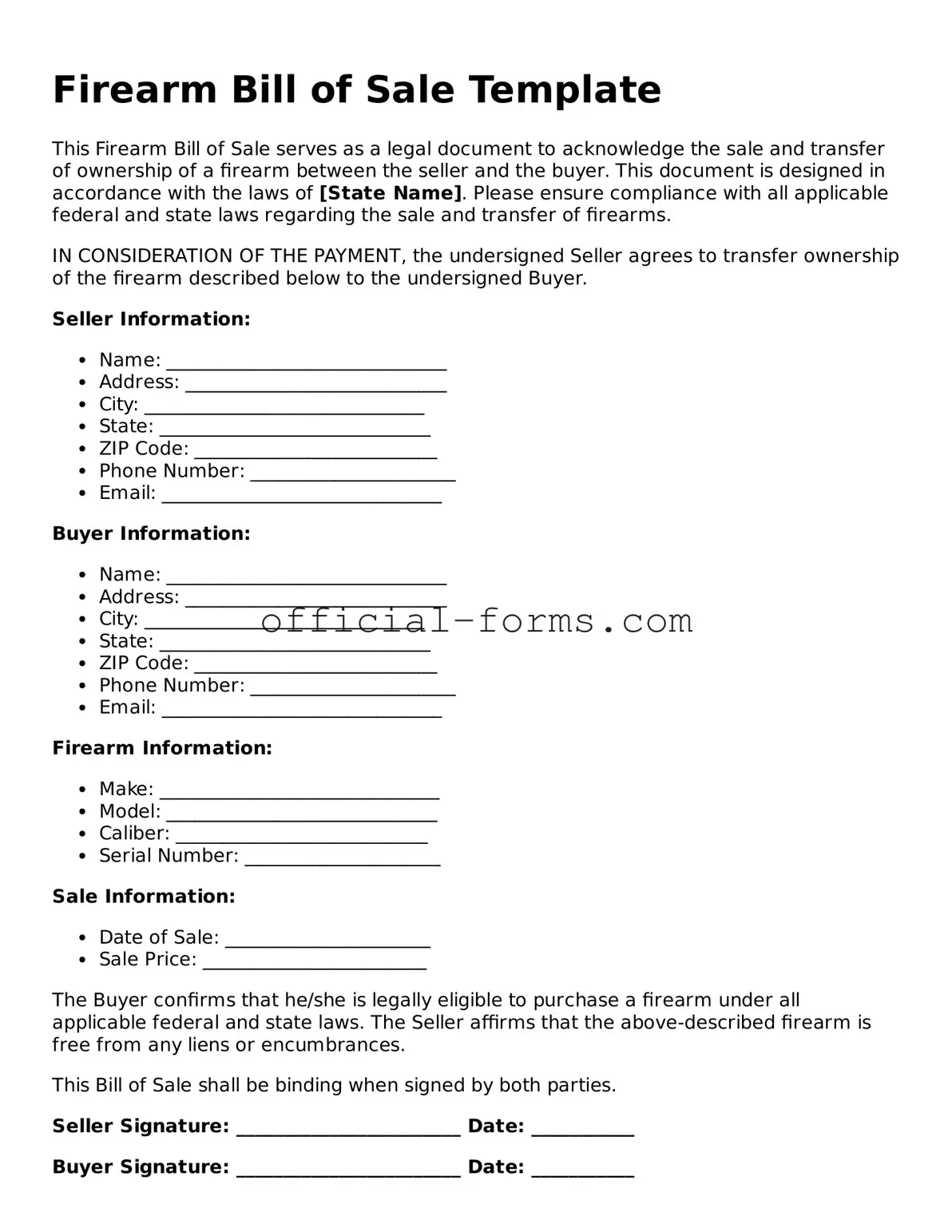Attorney-Verified Firearm Bill of Sale Template
The Firearm Bill of Sale form serves as a crucial document in the transfer of firearm ownership between parties. This form not only records the details of the transaction but also provides legal protection for both the buyer and seller. Understanding its components and significance can help ensure a smooth and compliant transfer process.
Open My Firearm Bill of Sale Now
